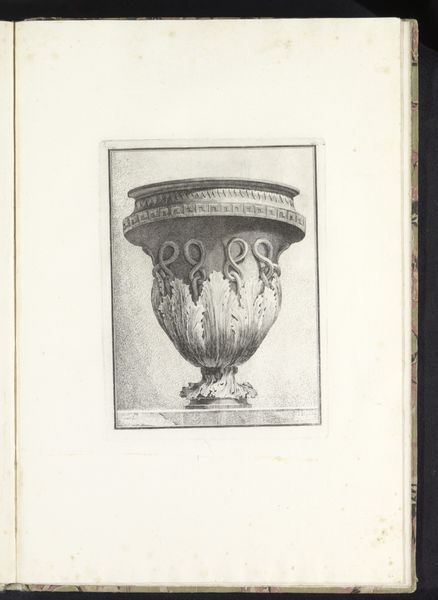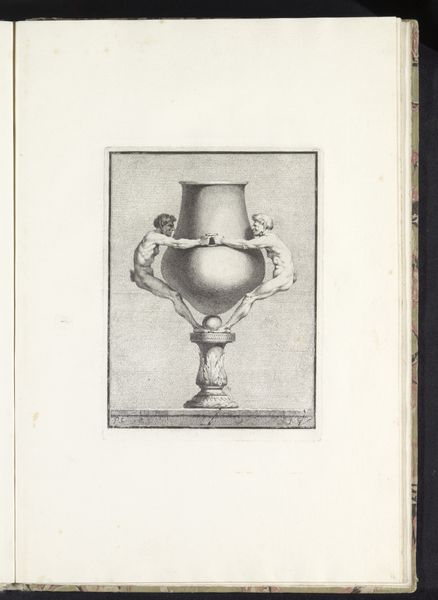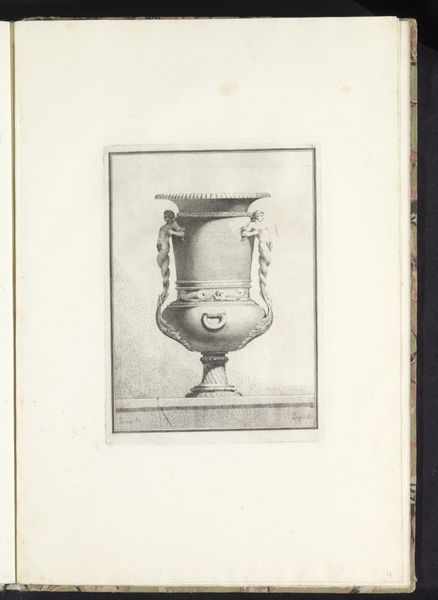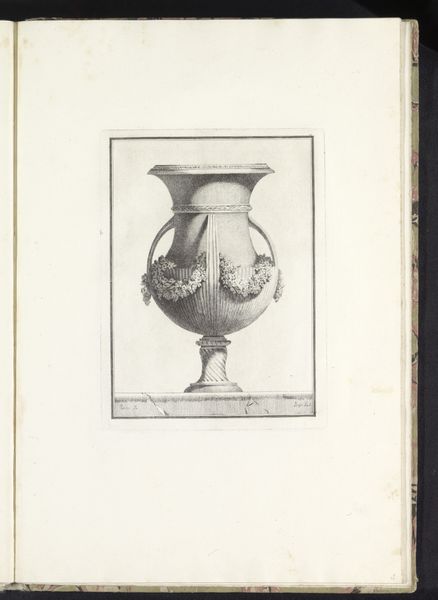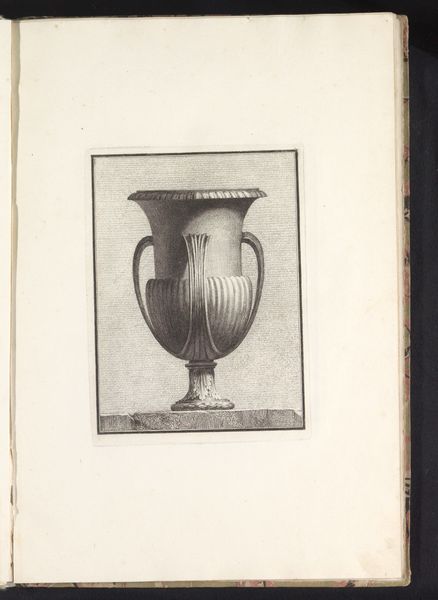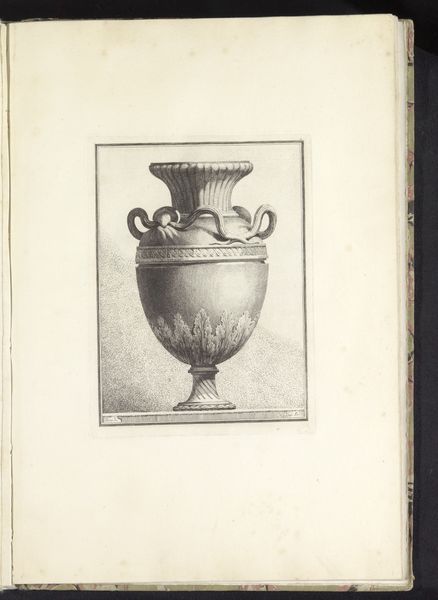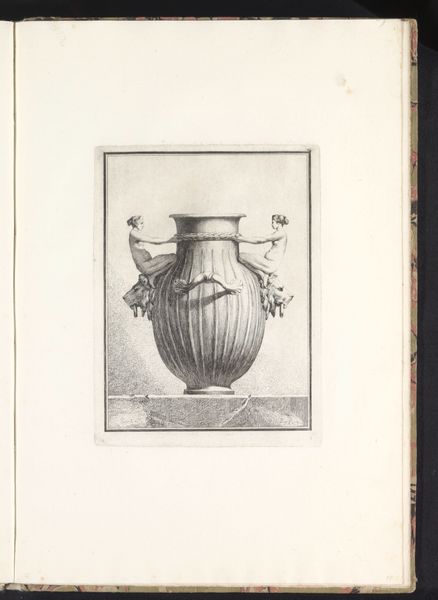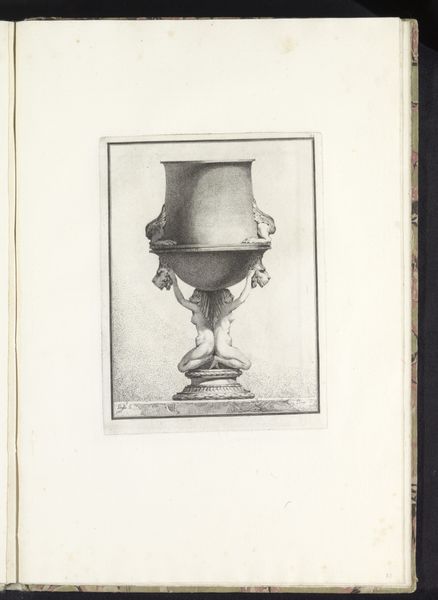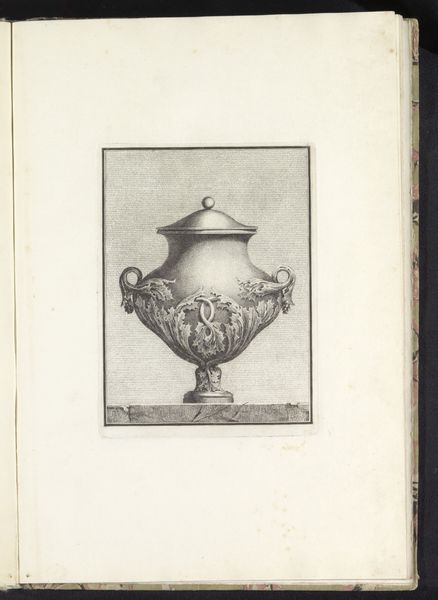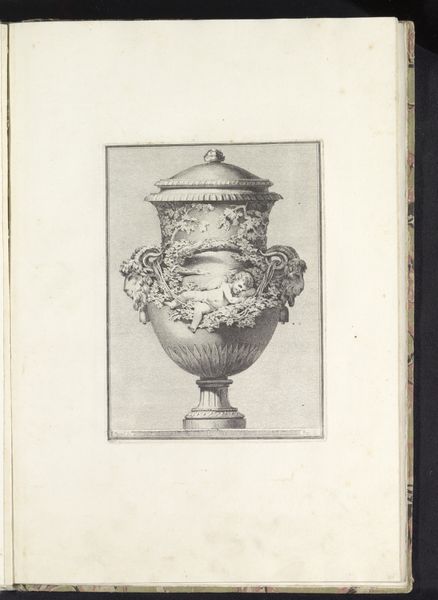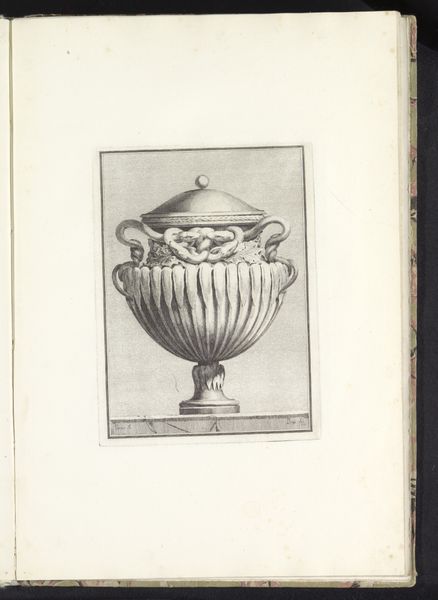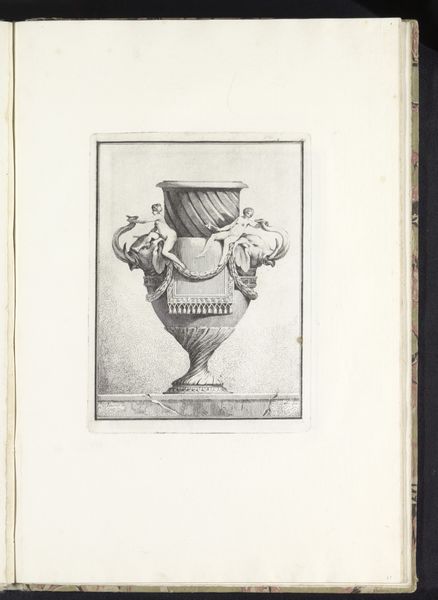
drawing, graphic-art, print, paper, ink, engraving
#
drawing
#
graphic-art
#
neoclacissism
# print
#
paper
#
ink
#
pen-ink sketch
#
engraving
Dimensions: height 227 mm, width 171 mm
Copyright: Rijks Museum: Open Domain
Curator: Well, hello there. What strikes you first about this rather formal depiction? Editor: Stark elegance, wouldn't you say? It feels meticulously constructed, almost as if the artist wanted to capture not just a vase, but a concept. Like a theorem rendered in ink. Curator: That’s a keen observation. We’re looking at “Vase with Two Ears in a Niche,” created in 1764 by Benigno Bossi. It's a fascinating example of Neoclassical printmaking. He masterfully combined drawing, engraving, and etching to bring it to life. Editor: Two ears! They almost look like stylized ram's horns, but a bit softened for refinement. I'm struck by how static and theatrical the entire scene seems—it feels more staged than observed. Curator: Exactly. Neoclassicism aimed to revive the aesthetics of ancient Greece and Rome, so this idealized, almost sculptural presentation aligns with that movement. It references the forms and ideas then valued in Western art. The niche creates this sense of a relic, almost presented in a museum, ahead of its time. Editor: Right, the vase becomes an object of veneration, almost… clinical? All those cross-hatching lines give the vase weight and solidity. The severe architectural frame only amplifies that stillness. Did Bossi produce works that engaged directly with the social upheavals happening around him? Curator: Bossi's legacy places him within courtly artistic circles, designing for elite patronage. His artistic production reflects this position, with its ornamental and decorative focus during a period rife with revolution. In these kinds of settings, artists navigate shifting aesthetic currents. Editor: That context reframes my reading completely. Knowing his work was consumed by elite patrons gives the image a different edge—one of privilege and control, which, ironically, makes the "revolution in ink" you mention feel more subdued. Fascinating! Curator: It's art entangled in socio-political layers, isn't it? These artists participated in an economy of representation where power and aesthetics converge. I find it telling that they elevated even domestic items into testaments of prevailing tastes. Editor: Thanks, that certainly added a bit more substance to the vase! I was stuck at how it made me feel! Now there's a bit more meat to that emotional impact. Curator: Indeed, seeing the artist's intention contextualized lets you reconsider the work as more than the pure image.
Comments
No comments
Be the first to comment and join the conversation on the ultimate creative platform.
